It seems as though everyone wants a 'kitchen island' designed into their project and they do look amazing. For those who want to cook on the island the next decision to make is which type of fan extraction to use.
There are primarily four island extractor fan types to choose from when it comes to extraction over a kitchen island. Let us explain;
No Extraction at all!
Over the fifty years we have been designing kitchens we have occasionally, been asked not to include any kind of extraction. This tends to be because the client has never had cooker hood extraction in previous kitchens and has been quite happy. What you have never had, you will never miss!
Perhaps the type of cooking they do is typically not detrimental to the room atmosphere or surrounding décor. It is unusual these days but is an option.
Things to consider in the absence of a hob extractor fan
Frequent boiling of water can lead to condensation which often results in mould. If left unchecked this can be detrimental to your health. Cooking everyday also produces carbon dioxide and other toxins. Without proper ventilation these harmful particles remain in your home and could affect your health and cause headaches, skin irritation, and nausea.
Decorative Hanging Hoods
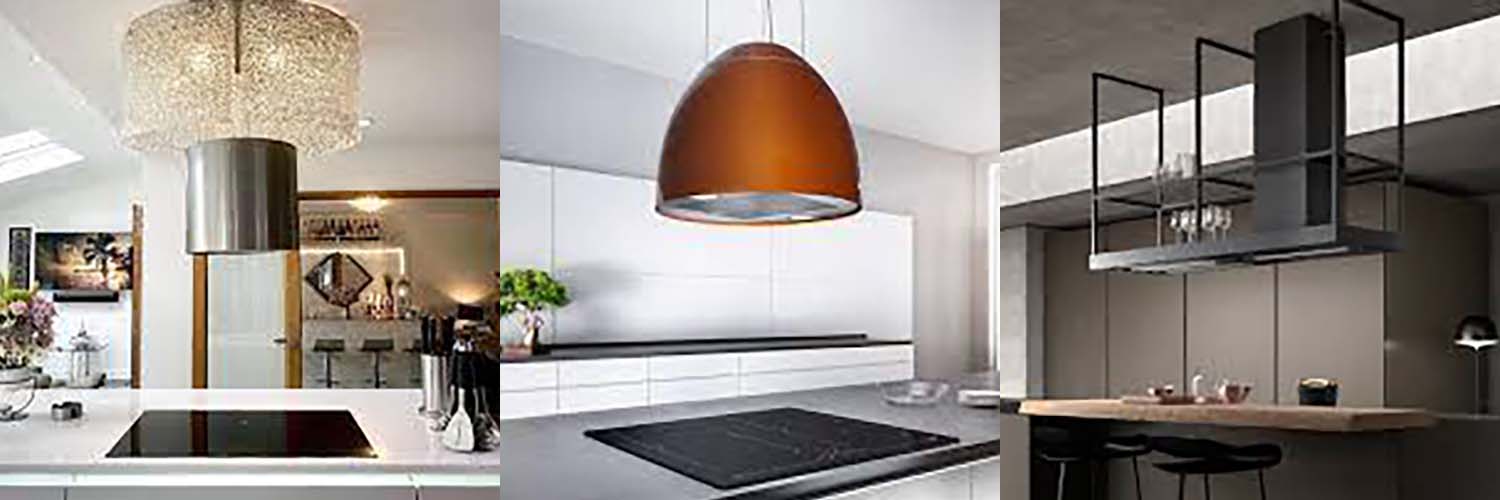
There are many, many types of cooker hoods that hang down from the ceiling. Some are very decorative – from glamorous crystal light fitments to more industrial styles. Some mimic the type of cooker hood that fit on a wall – curved glass styles and so on. These all function in the same way.
However it should be noted; if the cooker hood is to be ducted (externally ventilated through a duct in the wall) there needs to be a solid round, square or rectangular fitment built on to the ceiling.
If your chosen cooker hood hangs on wires then, of course, it cannot be ducted to the outside. This is dependent, anyway, on how much room there is between the ceiling joists and the location of the nearest outside wall.
These types of cooker hood can look bulky and spoil the clean lines of open plan kitchens – they can also cause you to persistently bang your head!
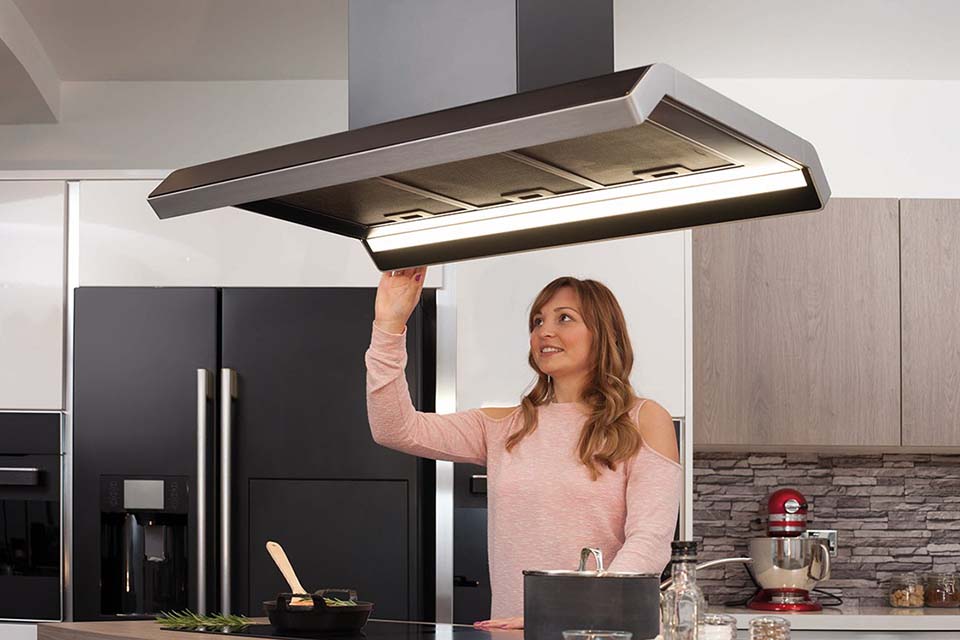
How do hanging hoods work?
There are two types of hanging cooker hoods. Extraction and recirculation.
Extractor hoods pull the air and vapour above your hob through ducting to an outside wall and funnel it outdoors. There is no need for filtration with this process.
Recirculation hoods recycle the air from your hob, remove grease and other odorous particles and vent it back into your kitchen.
Both systems are excellent at removing odours, cooking smells and even humidity.

Advantages
- Improves air quality
- A design focal point
- Better ventilation
- Control steam and humidity levels
- Provides additional lighting
- Prevent condensation
Disadvantages
- Can be a tad noisy depending on make and model
- More surface area to clean
- Can be an obstruction for taller people
Flush Fitting Extractor Hoods
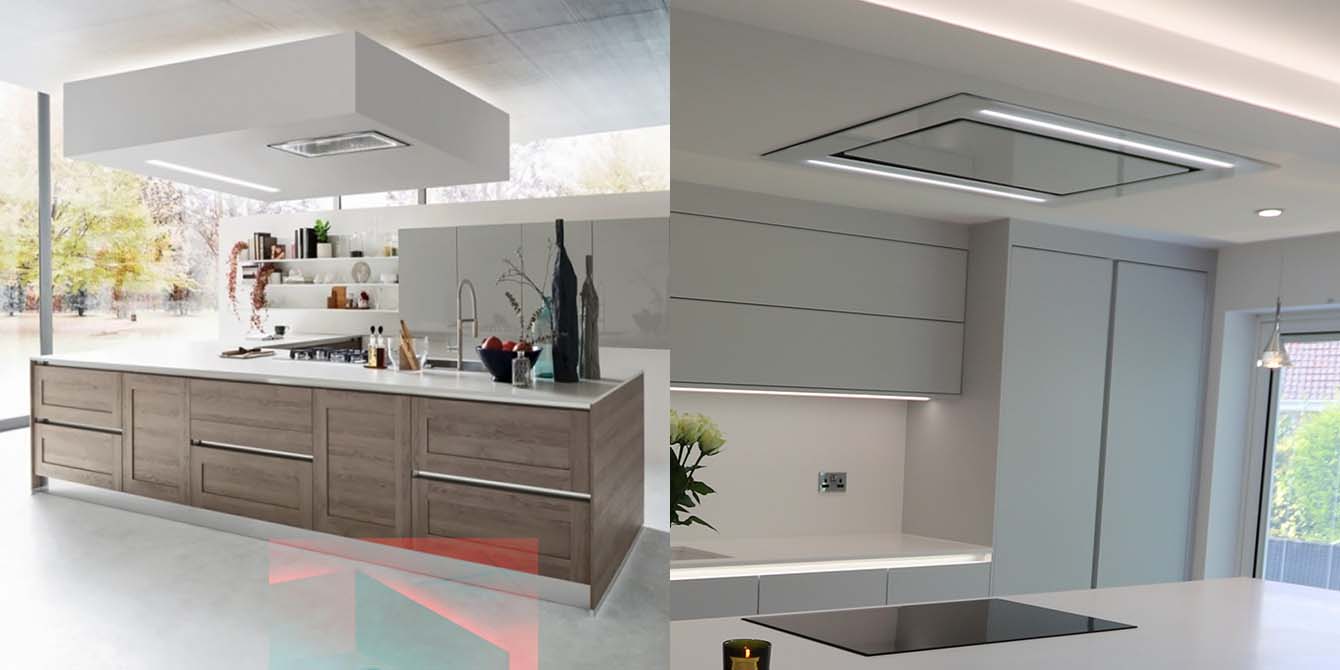
These are flush fitting and much neater looking. It isn’t usually possible to have these built directly into the ceiling as the hood body is too big to fit between standard ceiling joists. Commonly, we build a box structure on the ceiling to house the extractor. The design of the box is essential – nothing too big please. A much less intrusive design works best. Especially when discreet lighting is included. Again, these may be ducted to the outside.
How do flush fitting extractor hoods work?
As with hanging hoods, flush fitting extractor hoods have two primary options. External extraction and recirculation.
Flush fitting island extractor fan types, or island extractor fans work by pulling air upwards. Its the either pushed through a vent kit in the ceiling to the nearest external wall and released outside, or recirculated through charcoal filters and released back into the room.
Externally vented flush fitting extractor hoods are an efficient way of eliminating moisture, odours, heat and smoke from the cooking area.
Recirculating extractor fans purify the air to remove odours and smoke before putting it back into the room. This option eliminates the need for outside ventilation.
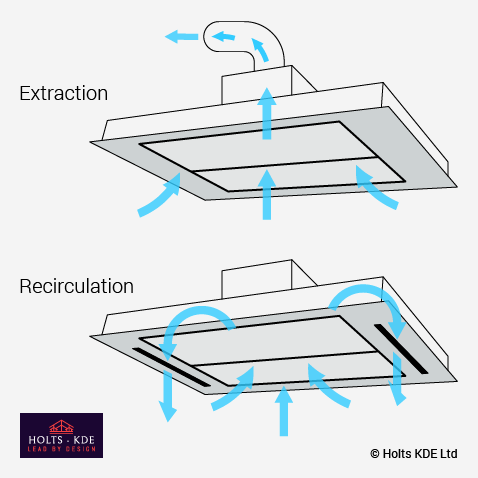
Advantages
- Improves air quality
- Prevents condensation
- Better ventilation
- Control steam and humidity levels
- Provides additional lighting
Disadvantages
- Not always as effective as wall mounted extraction due to the distance from the cooking source.
- Installation process is sometimes more complex.
- Can be a tad noisy depending on make and model
The Downdraft Extractor Fan
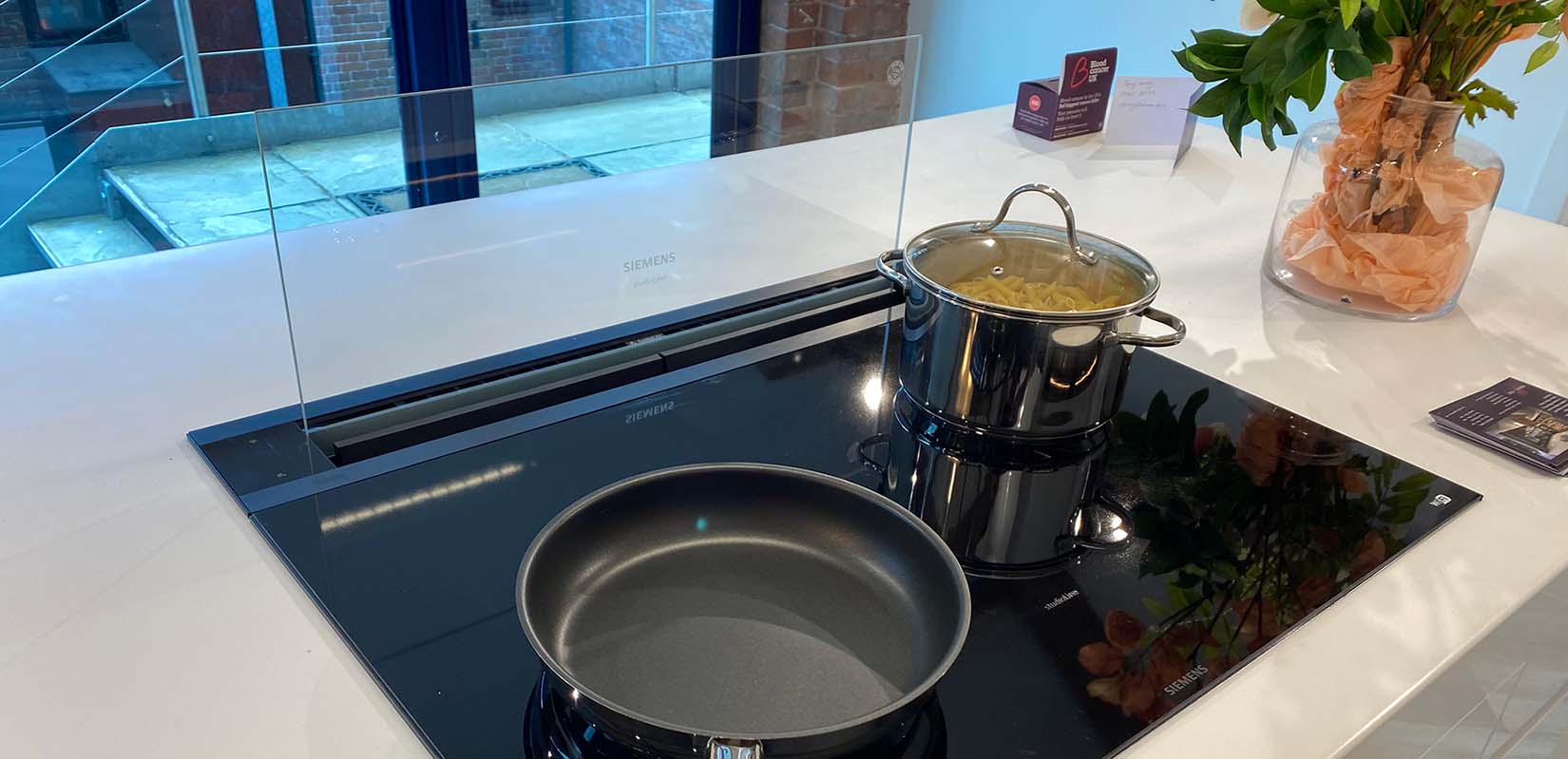
These are cooker hoods that fit into the worktop as opposed to hanging down from above. They tend to sit at the back of the bob often with a piece of glass that rises out of the work surface. They will fit to the exact width of the hob and look like one appliance.
There are downsides to the downdraft extractor. If there is a breakfast bar on the reverse of your island, then a raised piece of glass between you and the person seated at the bar can be in the way. Rarely can these extractors be ducted and if you have a gas hob, they are not advisable. Having said that these are the neatest form of extraction. They are also are efficient and relatively less intrusive. For a while this type of extraction was our go-to favourite choice.
How do downdraft extractor fans work?
Downdraft extractor fans are a ventilation system thats integrated with a hob or built into the work surface. They have a powerful motor with a high extraction rate capable of removing steam and odours quietly and efficiently.
A curtain of air is created behind the glass. This provides powerful and noiseless extraction. The air is either ducted to an outside wall or filtered and recycled back into the room.
Downdraft extractor fans eliminate the need for overhead venting by a traditional cooker hood. This clears up space above the hob and creates an aesthetic and sleek look for your kitchen.
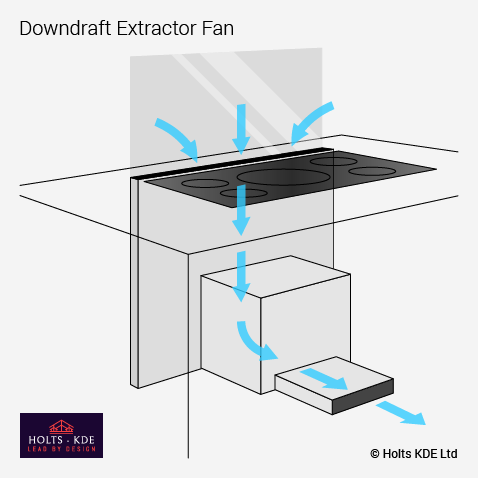
Advantages
- Removes grease and cooking smells
- Can be used anywhere
- Looks super stylish - a minimalist look
- Filters carbon produced when cooking
- You only see it during cooking
- Pleasantly quiet motor
Disadvantages
- Not suitable for gas hobs
- Less efficient with pans on front rings
- Takes up space under the worktop
Part two of this blog and moving right into the 21st century we will introduce the answer to all kitchen island extraction problems – the SELF VENTING HOB — coming soon!
Further reading/viewing
https://holtskde.uk/why-you-need-a-specialist-kitchen-designer/
https://youtu.be/zZRwp5uyJr8
Witten by Christine Holt on | Tagged: Extractors,
